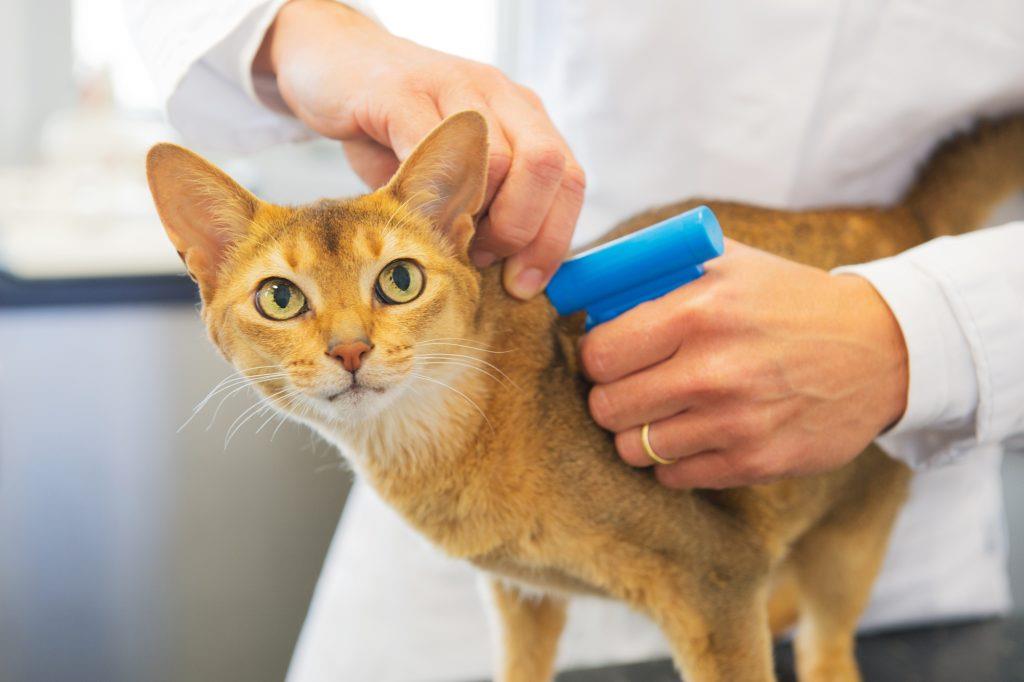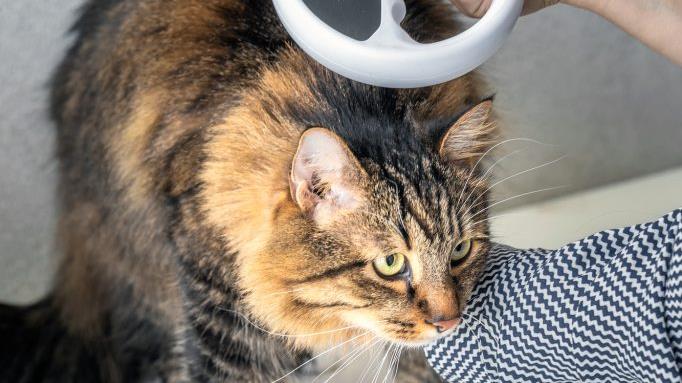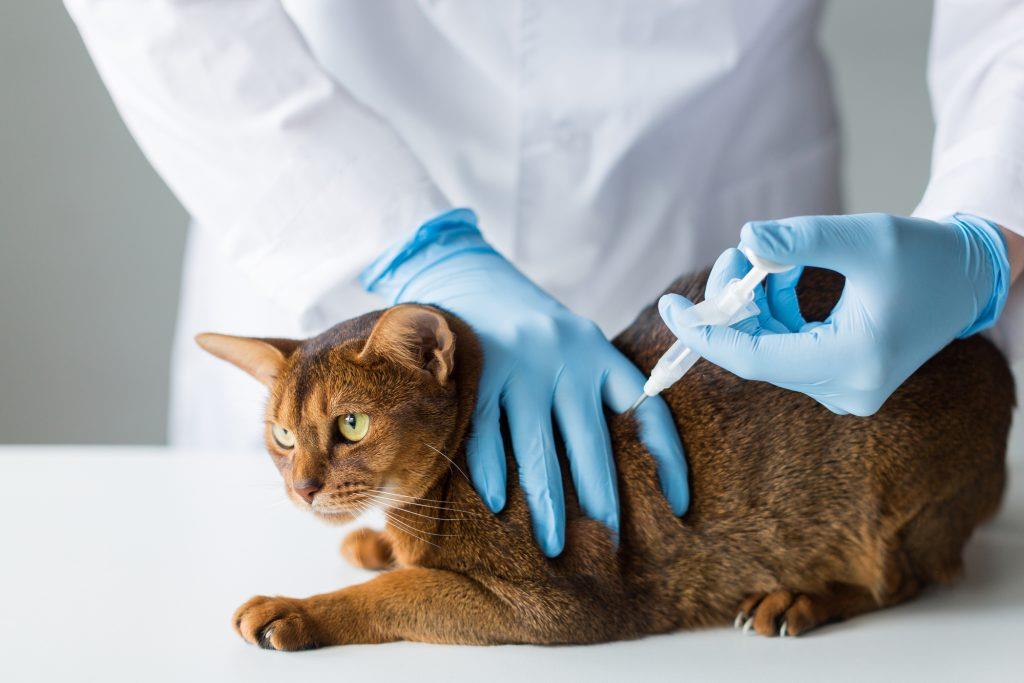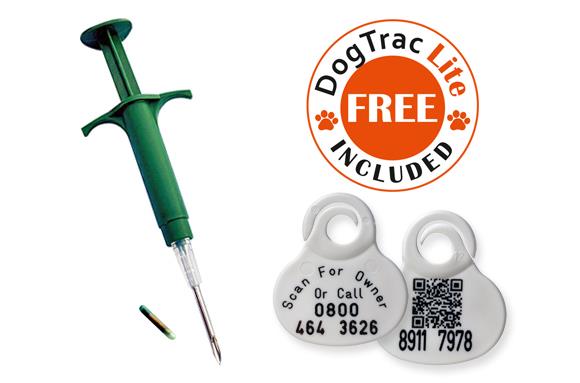Understanding Pet Microchipping
Pet microchipping is a safe and permanent method of electronic identification. The chip itself is small, about the size of a grain of rice, and is implanted just under the skin, usually at the back of the pet’s neck. Each chip is unique and carries vital information about your pet including your name, address and contact details.

Process of Microchipping
The process of microchipping is relatively straightforward and can be performed by any qualified vet. The microchip is inserted under the pet’s skin using a hypodermic needle. It’s quick, safe and causes little discomfort.
Different Types of Microchips
There are different types of microchips available, each with their unique frequency. The common frequencies are 125 kHz, 128 kHz and 134.2 kHz. The selection of microchip type largely depends on your geographical location and the standard frequency in use.
I recommend the inclusion of a chart showing the different types of microchips and their respective frequencies for a clearer understanding.
Ensuring Safety and Security: The Role of Microchips in Locating Lost Pets
Microchips, small devices implanted under a pet’s skin, have revolutionised pet safety and security. They emit a unique identification number that can be read by a scanner, allowing lost pets to be quickly identified and returned to their owners. 
Statistics on Microchipping Success
According to a study published by the Journal of the American Veterinary Medical Association, the return-to-owner rate for microchipped dogs was over 52%, compared to just 21.9% for non-chipped dogs. For cats, these figures were 38.5% and 1.8% respectively.
Case Studies: Microchips in Action
A series of case studies have highlighted the effectiveness of pet microchips. In one instance, a cat named Muffy was found 3,000km away from home after being missing for 9 years. She was returned to her owners thanks to the information stored in her microchip.
It’s clear that microchips play a vital role in pet safety and security. They are a reliable, effective way to locate lost pets and reunite them with their owners.
Microchipping as a Standard Identification Method
Microchipping has emerged as a leading, permanent form of identification for pets. Unlike collars or tags, which can be lost or damaged, microchips are implanted beneath the skin, providing a lifelong means of identification. They are small, roughly the size of a grain of rice, and are generally implanted between the shoulder blades.

Comparing Microchipping with Other Identification Methods
While collars and tags have been traditional identification methods, their impermanence is a significant drawback. Microchips, in contrast, offer a durable solution. A 2012 study showed that microchipped pets were returned to their owners 2.5 times more often than those without.
Microchips for Legal and Travel Purposes
Microchips are also being used increasingly for legal and travel purposes. For instance, the Australian Government requires all imported pets to be microchipped as part of its biosecurity regulations. This helps ensure traceability and animal safety, reinforcing the importance of this technology.
Health Tracking and Veterinary Benefits of Microchips
Microchips play a pivotal role in maintaining and accessing your pet’s health records. These minuscule devices, typically implanted between your pet’s shoulder blades, store unique identification numbers. This ID can be linked to a database containing vital health information, including vaccination records, dietary needs, and existing medical conditions. This centralisation of health records facilitates seamless veterinary care, especially in emergencies.

Microchips could potentially aid in disease management.
They can be utilised to monitor your pet’s regular activities and provide early disease detection, thereby preventing severe health issues.
From a veterinarian’s perspective, microchipping is highly beneficial.
It ensures swift access to a pet’s medical history, aiding in accurate diagnosis and treatment. Additionally, it helps reunite lost animals with their owners, reducing stress and potential health risks associated with straying.
Microchipping your pets is a simple procedure with long-term benefits, ensuring your pet’s health is monitored and managed effectively.
Ease of Implementation and Longevity of Microchips
Microchipping your pet is a straightforward and rapid process, making it an effective solution for pet identification. The procedure involves inserting a small, rice-sized microchip beneath your pet’s skin, usually between their shoulder blades, using a hypodermic needle. This process is quick, typically taking only a few seconds, and is no more painful than a standard vaccination.
Longevity and Durability of Microchips
Microchips are designed to last the lifetime of your pet. They do not require any power source, as they are passive devices activated by the scanner’s radio waves. Made from biocompatible materials, these chips are highly durable and resistant to the physical activities of your pet.
Maintenance and Potential Issues
Maintenance of microchips is minimal. However, it’s important to ensure your contact information is up-to-date in the microchip database. Potential issues with microchips are rare, but can include migration from the original implantation site. Regular vet checks can help confirm the chip’s position.
Addressing Common Concerns and Myths about Microchipping Pets
One prevailing myth is that microchipping can cause harm or discomfort to pets. The truth is, the procedure is no more painful than a routine vaccination. The microchip, about the size of a grain of rice, is injected under the pet’s skin, typically between the shoulder blades. Any discomfort is temporary and far outweighs the potential risk of a lost pet.

Another concern is privacy and data security. Rest assured, the information on the microchip is not accessible to just anyone. The data can only be read by specific scanners, used by veterinarians and animal shelters. The microchip does not track your pet’s movements or store personal information, it merely contains a unique identification number.
Lastly, let’s address the misconception that microchips can move around the body, rendering them useless. Studies have shown that this is extremely rare. Migration of the chip within the body is uncommon, further endorsing the reliability of microchipping.
The Cost Aspect of Microchipping Your Pets
Microchipping your pet is a valuable investment in their safety and your peace of mind. Let’s break down the cost factor.
Breakdown of the Cost of Microchipping
The upfront cost of microchipping usually ranges between $25 to $50, which includes the procedure and the registration in a national pet recovery database. This is a one-time cost, with no ongoing fees.
Comparison with Potential Expenses of Lost Pets
Compare this with the potential cost of a lost pet, which can include advertising, reward offers, and emotional distress. Microchipping is a cost-effective strategy for pet recovery.
Affordable Options and Schemes for Microchipping
There are also affordable options and schemes for microchipping. Some local councils, animal welfare organisations, and veterinary clinics offer discounted or even free microchipping services at select times. Keep an eye on the RSPCA and your local council’s website for any upcoming events.
Emerging Technologies and Advancements in Microchipping
The future of microchipping pets is marked by significant technological advancements. Scientists are developing bio-compatible microchips that can seamlessly integrate with a pet’s body. These microchips, smaller than a grain of rice, are being designed to last a pet’s lifetime without causing discomfort or health issues.
Potential Future Applications and Benefits of Microchips in Pets
Microchipping pets carries several potential benefits beyond simple identification. Future microchips could monitor a pet’s vital signs, track their location, and even detect early signs of disease.

Expert Predictions on the Future of Pet Microchipping
Experts in the field believe that microchipping will become a standard practice for pet owners, thanks to its numerous potential benefits. They foresee a future where microchips will play a critical role in pet healthcare, tracking diseases, and predicting health issues.
Related posts
Recent Posts
- Pet Emergency Preparedness: Ensuring Your Furry Friend’s Safety in a Crisis
- The Importance of Pet Vaccinations: Protecting Your Furry Friends
- Kitten Feeding Guide: Essential Tips for New Cat Owners
- Dangerous Pets: What You Need to Know Before Bringing One Home
- Understanding Pet Loss Grief: Coping with the Loss of a Beloved Animal Companion


